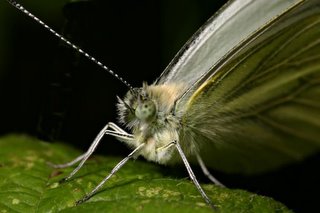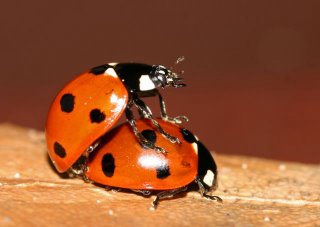Amazing BBC program (Part 1) "Life in Undergrowth"



This is the newest series of the famous nature program hosted and written by Sir David Attenborough (left), brother of an English actor Richard Attenborough (himself a "Sir").
As always, the cameraworks on his programs are awesome--special cameras are used to capture the most amazing details of the wonderful insects' habitat, busy doing their own things according to their instinct. And oh boy how beautiful can they be!
They also use computer graphics here and there, all of which look very real, to show the subject from 360 degrees, or to show their viewpoint.
I once saw, in a club in Amsterdam, nature program projected on the screen showing a ladybird flying through jungle to a nest of million ladybirds stuck to the tree, both from ladybird's viewpoint and the wide-angle shot of the jungle being used in accompany with music from Nobukazu Takemura. I was totally blown away. I was sure that it was taken from Attenborough's program.
Anyway, a highlight from the episodes so far, for me, was a moth which sucked on tree barks for sap, but because he doesn't need glucose in his body he excretes it out of his abdomen, creating a tiny ball of sugar-water. Then there comes another butterfly (I can't remember what it was--this episode was aired 2-3 weeks back), which crawled right behind the moth, and "knicking" the water with his antennae! Funny that the moth doesn't mind that at all, he's busy biting into the tree.
The next show (on air Wed 21st of December, 9 to 10PM GMT) will feature insects which live in groups--Ants and Bees. I saw the preview of it on yesterday's program, and...again, I can only give all those superlatives. David Attenborough, clad in special suit, will be hoisted up a really tall tree to observe a bee colony, to see how they defend against intruders by disturbing them a little with a long twig with a fake hornet at the end. Bees first reply by vibrating themselves and moving their wings, doing this successively from one end of the colony to the other, creating a moving pattern that travel accross them. You can see the video of this from the link above, or here. (Requires Real Player--i know it's annoying...i don't even have that program)
Also, scientists will fill a disused termite mound with plaster to reveal the inner structure. What comes out after the structure of spit and mud is washed away by blasting water to it, is the most intricate network of tubes which act as a giant cooling system for the family! So clever, so beautiful, so environmentally friendly.
In short, unmissable.
But right now I'm seriously thinking of buying the DVD box set of David Attenborough's "Life" collection.
This 24(!) disc set boasts incredible 4360 minutes (that is 72 hours and 40 minutes) of footages from "Life of Mammals" to "Life in Undergrowth". It costs mere 130 quid plus 5 quid deliverly anywhere in Europe. That is a bargain. Only problem is, I have no creditcard!!
A reviewer for Life of Mammals said "Buy this, and if you don't have a DVD player, buy that too cos it's that good".
Perhaps, after watching it, I would regret being born as a human being, that I couldn't be an insect, a plant, or an animal. It seems to me that they don't "waste" time. I don't even know if they have the idea of it, but everything they do seems logical, purposeful, confident, and most importantly, graceful. For many of them, especially insects, it's a fight against time, to find mate(s), to reproduce. But the numerous ways that they achieve that, and how they developed themselves to "perform" that ritual is always intriguing, and touching.
